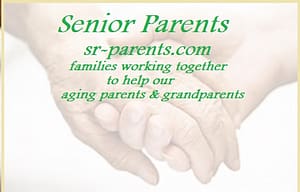Have you ever heard about arthritis in elderly people? Well, let me tell you, I know a bit about it because I’ve had arthritis too. Arthritis is like a tricky guest that can make your joints feel sore and stiff, especially as you get older. You might wonder what exactly arthritis is and why it happens. Join me on a little journey to explore what arthritis is all about and how it can affect our older pals. Trust me, understanding it is like having a superpower to help our grandmas, grandpas, and others who might be dealing with it. Let’s dive in and learn together!

Contents
Definition of Arthritis
According to the CDC, arthritis means inflammation or swelling of one or more joints. It describes more than 100 conditions that affect the joints, tissues around the joint, and other connective tissues. Specific symptoms vary depending on the type of arthritis but usually include joint pain and stiffness.
Credits: Dartmouth Health
Types of Arthritis in the Elderly
Rheumatoid Arthritis
Rheumatoid arthritis, abbreviated as RA, is a condition characterized by autoimmune and inflammatory responses. This means that the immune system mistakenly targets and attacks healthy cells in the body, leading to inflammation, which manifests as painful swelling in specific body parts.
The primary focus of RA is on the joints, often impacting multiple joints simultaneously. Commonly affected areas include the hands, wrists, and knees. In joints affected by RA, inflammation occurs in the joint lining, resulting in damage to the surrounding tissue. This damage can give rise to persistent or chronic pain, instability (lack of balance), and deformities (misshapenness).
Beyond joint involvement, RA can extend its impact to other body tissues, potentially causing complications in organs like the lungs, heart, and eyes.

Osteoarthritis
Osteoarthritis is a type of arthritis that primarily affects the joints. It is a common condition where the protective cartilage that cushions the ends of bones wears down over time. Cartilage is a firm, slippery tissue that enables smooth joint movements. When it deteriorates, the bones begin to rub against each other, causing pain, swelling, and decreased joint flexibility.
Osteoarthritis often develops gradually and can affect any joint, but it commonly occurs in the hands, knees, hips, and spine. Factors such as aging, joint overuse, and genetic predisposition can contribute to the development of osteoarthritis. Unlike some other forms of arthritis, osteoarthritis is not related to autoimmune or inflammatory processes.

Embark on a personalized journey to address your elderly arthritis needs at ArthritisSupplies.com, where a wealth of thoughtfully curated solutions awaits. Delve into the richness of support and comfort designed uniquely for you. #ads #commissionsearned
How Arthritis in Elderly People Sneak In

Gradual Wear and Tear
Over the years, our joints have gone through a lot. The natural wear and tear that comes with aging can slowly break down the protective cushioning in our joints, making them more susceptible to arthritis.
Unseen Culprits in the Genes
Sometimes, arthritis can run in families. If your parents or grandparents had it, there’s a chance that those sneaky arthritis genes might be passed down to you.
Joint Overuse and Abuse
Just like a favorite toy that gets worn out with too much play, our joints can suffer if we overuse them. Years of heavy lifting, repetitive motions, or putting too much stress on the joints can make arthritis more likely to knock on the door.
Inflammation Invaders
In some cases, the body’s defense system, the immune system, can get confused and start attacking the joints. This leads to inflammation, making the joints sore and swollen.
Weighty Matters
Carrying extra weight puts extra stress on our joints, especially the knees and hips. As the pounds add up over the years, they can pave the way for arthritis to make an entrance.
Previous Joint Injuries
Sometimes, injuries from the past can come back to haunt us. If you’ve had a joint injury, it might increase the chances of arthritis setting in as the years go by.
How Joints and Arthritis Connected
Arthritis, which means “joint inflammation,” occurs when this protective cartilage breaks down. In some types of arthritis, such as osteoarthritis, the cartilage gradually wears away over time due to factors like aging or joint overuse. In others, like rheumatoid arthritis, the body’s immune system mistakenly attacks the joints, causing inflammation.
The inflammation associated with arthritis doesn’t just affect the cartilage. It can also impact other parts of the joint, including the synovium (lining of the joint), ligaments, and tendons. This can contribute to further pain and difficulties in movement.
If arthritis is not managed well, the persistent inflammation and damage to joint tissues can lead to long-lasting pain, a lack of balance, and even deformities in the affected joints. This is especially true in more severe cases or if arthritis is left untreated.
How to Recognize Signs of Arthritis in Elderly Loved Ones
Joint Pain
Joint pain is the persistent pain in one or more joints, especially after movement or at the end of the day.
It is one of the most common signs of arthritis, so better check this out.
Stiffness
Stiffness involves difficulty moving joints, particularly in the morning or after a period of inactivity.
Usually, stiffness in moving joints occurs in the morning, so a morning stretch will definitely help in alleviating this pain.
Swelling
It is the noticeable swelling or puffiness around the joints, which may be warm to the touch.
Limited Range of Motion
It involves difficulty moving a joint through its full range of motion. Also, it is the stiffness that affects daily activities.
Crepitus
When moving a joint, the grating or crackling sensation indicates roughened surfaces due to cartilage loss. People can experience crepitus at any age, but it becomes more common as people get older.
Fatigue
The unexplained tiredness or fatigue can be associated with the body’s response to chronic pain and inflammation.
Joint Deformities
These are the changes in the appearance of joints, such as swelling, redness, or deformities like knobby finger joints.
Difficulty Grasping Objects
This involves trouble holding or gripping objects, especially in the hands or fingers.
Changes in Walking Pattern
It involves altered walking or gait patterns due to joint pain or stiffness, often noticeable over time.
Balance Issues
The unsteadiness or difficulties with balance are potentially caused by joint pain affecting mobility.
Morning Stiffness
Morning stiffness that lasts for more than 30 minutes is a common characteristic of inflammatory arthritis.
Trouble Climbing Stairs
Difficulty ascending or descending stairs can be a sign of arthritis affecting the knees or hips.
Minimize Arthritis in Elderly Individuals

Gentle Exercise and Movement
Encourage regular, low-impact exercises such as swimming, walking, or tai chi. These activities help maintain joint flexibility, strengthen surrounding muscles, and reduce stiffness. Gentle stretching exercises in the morning or before bedtime can also improve joint mobility and alleviate discomfort.
Maintain a Healthy Weight
Excess weight can exacerbate arthritis symptoms, particularly in weight-bearing joints such as the knees and hips. Maintaining a healthy weight through a balanced diet can reduce the strain on joints, relieving pain. Consultation with a healthcare professional or a registered dietitian can help tailor a nutrition plan that suits individual needs.
Joint Protection Techniques
Teach and practice joint protection techniques to minimize stress on affected joints. This includes using assistive devices like canes or braces, adopting ergonomic tools, and learning proper body mechanics to avoid unnecessary strain during daily activities. Being mindful of posture and using adaptive aids can significantly reduce the impact of arthritis on day-to-day tasks.
Hot and Cold Therapy
Applying heat or cold to affected joints can provide relief from arthritis pain. Warm compresses, hot water bottles, or heating pads can help soothe stiff joints and relax muscles. On the other hand, cold packs or ice packs can reduce inflammation and numb pain. It’s important to tailor the choice of therapy to individual preferences and the specific needs of the affected joints.
As we conclude our exploration of navigating arthritis in elderly individuals, let us remember that life’s journey is filled with twists and turns, but it’s the resilience within that defines our path. Embrace the moments, cherish the connections, and savor the beauty of every step taken. Arthritis in elderly individuals may present its challenges, but we can transcend limitations with a spirit of resilience and a commitment to joy.
Each day is a new opportunity to find solace in shared laughter, revel in the warmth of companionship, and celebrate the enduring strength that resides within. So, as we navigate the intricate tapestry of life, let us not merely endure but truly thrive, turning the page to revel in the countless moments waiting to be embraced and enjoyed.
Again, unveil a world of tailored solutions for elderly arthritis by visiting ArthritisSupplies.com—a treasure trove of offerings meticulously crafted to meet your unique needs. Experience the abundance of support and comfort that awaits you. #ads #commissionsearned
FAQs
What Is Arthritis, and How Does It Affect the Elderly?
Arthritis is a general term for chronic disease or conditions that affect the joints, causing pain, swelling, and stiffness. In elderly individuals, the most common types of arthritis are osteoarthritis and rheumatoid arthritis. Osteoarthritis is characterized by the breakdown of joint cartilage over time, while rheumatoid arthritis is an autoimmune disorder that causes inflammation in the joints.
What Are the Common Symptoms of Arthritis in the Elderly?
The other symptoms of arthritis in the elderly may include joint pain, stiffness, swelling, and decreased range of motion. These symptoms can impact daily activities and reduce the overall quality of life. Arthritis commonly affects weight-bearing joints such as the knees and hips but can also affect the hands, wrists, and other joints.
How Is Arthritis in the Elderly Diagnosed and Treated?
Diagnosis often involves a combination of medical history, physical examination, imaging tests (such as X-rays or MRIs), and laboratory tests. Treatment options for arthritis in the elderly may include medications for pain and inflammation, physical therapy, lifestyle modifications, and, in some cases, surgical interventions. Individuals must work closely with healthcare professionals to develop a personalized treatment plan based on the type and severity of arthritis.
Follow Our Socials
Following Senior Parent’s other social media platforms, like Facebook, Instagram, Pinterest, and Twitter can be a valuable decision for individuals seeking insightful tips and a sense of community. Senior Parent goes beyond mere advice, offering a wealth of experience and wisdom on various topics, including parenting, life transitions, and personal development.








